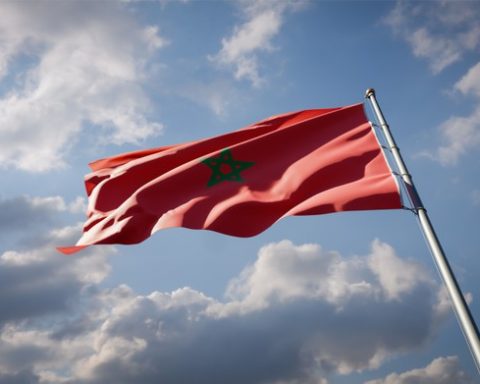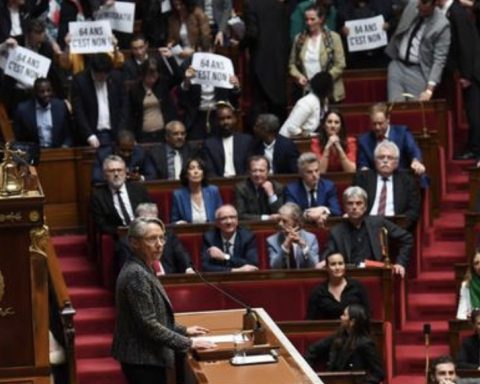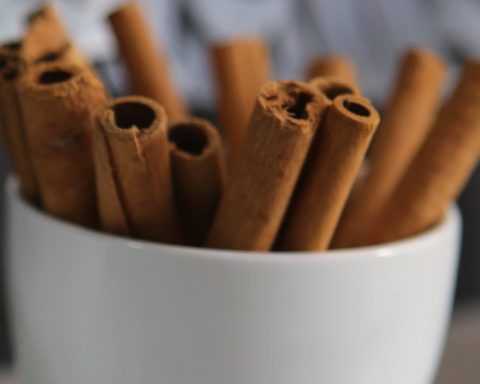Paris – French President Emmanuel Macron recently attended the opening of an exhibition in Paris that traces Jewish presence in the Arab world.
“Jews of the East, a Multi-Millennial History,” hosted by the Arab World Institute (IMA), has been billed as a “cultural event of international significance.” It includes displays of archaeological remains, liturgical objects, jewelry, costumes, ancient manuscripts, paintings, and photographs, along with music and audiovisual installations.
For Macron, the show provides a “great lesson” about “coexistence, mutual enrichment and exchanges between monotheisms.” He said: “Identity is always more complex than we think and feeds of other identities.”
The exhibition, which runs until March 13, contains works from collections in France, the US, Spain, the UK, Belgium, Brazil, and Morocco, and highlights the ancestral cohabitation between Jewish and Muslim communities. It focuses on periods of rich artistic and intellectual creativity as well as erratic violence.
Of particular interest to Saudi visitors will be three photographs of the Khaybar Oasis — located on a major caravan route in the Hejaz. In ancient times, it was home to Jewish tribes. “Today, there is a French team of archaeologists undertaking research on the spot to better understand this complex history of Jews and Muslims in this historic place, with the consent of the Saudi authorities,” IMA president Jack Lang told Arab News.
The curator of the exhibition, Benjamin Stora, is a university professor and historian specializing in the Arab Maghreb. He explained that Jews were present in North Africa before the arrival of Christianity. “The Jewish community in the Arab Maghreb spoke only in Arabic, except in certain regions where they either spoke Berber or a mixture of Spanish, Hebrew and Arabic,” he said.
This intersection of the three languages reflects the cohabitation of communities which included expatriate rabbis from Andalusia who settled in Tlemcen, Constantine, and other cities in the Maghreb.
Jewish people, he said, left an “undeniable imprint” on the culture of the region, especially when it came to craftsmanship. “My ancestors, originally from Constantine, were jewelers and made snake-shaped objects that women wore at parties and weddings,” he explained.
Discussing political and religious tensions between the two communities, he said: “The period of French colonization and the Cremieux Decree of 1870 (granting French citizenship to Algerian Jews but not to Muslims) marked the separation of these two native groups, Muslim and Jewish.” That separation was exacerbated by Algeria’s war of independence, he added, which saw many Jews side with France.
The subject of a Jewish presence in the Arab world is, of course, an emotional and thorny topic for many, and Lang stressed that “the exhibition absolutely does not address the political questions of today.” But Stora, who has spent more than 40 years researching the contemporary history of the Maghreb region, stressed the need to preserve cultural history. “We cannot reduce this to the Palestinian issue, to colonization, or to the departure of the Jews. It is also a question of preserving memories, which cannot wait for all political questions to be resolved.”
His sentiments were echoed by Lang, who said: “This institute can only truly fulfil its vocation if it is open to all the spiritual and intellectual heritages that have marked the history of the Arab world.”
Denis Charbit, a professor of political science at the Open University of Israel and a specialist in 20th-century Jewish history, said the exhibition had an important role to play in the fight against ignorance and pointed out that the Jewish presence alongside Arab and Berber populations dated back 2,000 years, adding that it was “necessary” to integrate the exile of Jews from Arab countries into the exhibition and to ensure that the region’s cultural history is passed on to future generations.
“It is not a question of a single history, a single religion, a single culture, but a plurality of interventions, cultures, civilizations of languages, as well as a passage of populations,” he said.
“Never before has the history of the Jews in these countries, which have become Arab countries today, been told on a millennial scale,” Lang said. “It is a way of repairing ignorance, of showing that the Arab world has a rich religious and cultural history, which fashioned its originalit.














